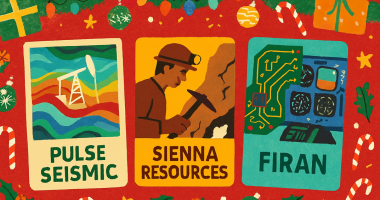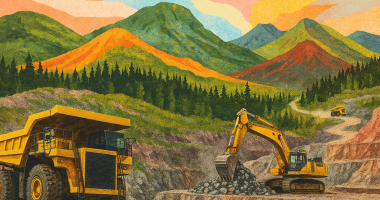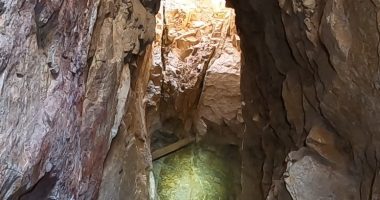ATEX Resources is focused on extracting precious metals in South America. The Toronto-based mineral exploration company’s flagship Valeriano Copper-Gold Project is located in north-central Chile, in an existing gold porphyry belt.
The company’s Director and CEO Raymond Jannas spoke with The Market Herald’s Simon Druker to talk about the company’s latest developments in Chile.
TMH: It has been a while since we last spoke, give us a big picture update of what’s gone on over the last six months. This has been somewhat of a transformative year…
RJ: It’s been a quite exciting year. There’s been, as you say some transformative issues. I’d say one of the most important one was getting the right drilling company. When you are drilling in the high Andes, it’s hard to reach objective on deep holes all the time. So, most of the companies that are drilling in the high Andes are losing in the order of one third of the holes. Not that they can’t drill at all, they just don’t reach their objectives. We hired Recon Drilling, a subsidiary of Geodrill that does directional drilling and that’s been a game changer for us because we’ve been able to complete all our holes up to now.
We had a plan of 10,000 metres but we’re still going to probably drill in the order 12,000-13,000. So, it’s been a good program in that sense. The other transformation is that last year we came up in June at PDAC with our main drill hole ATXD-17 with 1,160 metres with 0.78% copper equivalent and it had additionally 550 metres with 1.03% copper equivalent. That was proof of our concept because we had one drill hole done by Hochschild that was drill hole 14 that had a 272 metres at 1% copper equivalent and we wanted to follow up on the extension of this high grade. The reason for that is that this is a deep porphyry that mineralization starts about 700-800 metres below surface. So, for it to be able to conceptually be mineable underground as block cavining or some system like that, you need to prove up some high grade. So, we drilled hole ATXD-17, 200 metres to the south and we hit the high-grade. ATXD-19 that we drilled 200 metres to the north, we didn’t reach objectively as it was lost not being able to complete the story. So, what did we did this year with this directional drilling is we came back into the old Hochschild drill hole 11 and we drilled to the east from there to go under 19 that we had lost.
That was drill hole ATXD-11A and that came up with 1,270 metres with 0.63% copper equivalent with 170 metres of high grade with 0.8%. So again, we proved extensions 200 metres north and south of drill hole 14. We drilled another daughter hole from 11 that started about 800 metres depth. We continued this drill hole ATXD-11B sub-vertically because we saw some fragments of the early porphyry in the rock milled breccia, and wanted to test if there was high-grade mineralization in porphyry in depth, and we hit 1,343 metres with 0.73% copper equivalent and that includes 1,010 metres of 0.8%. What’s neat about this is that this is a new corridor that is to the west of the central high-grade corridor. So, this was really exciting news.
TMH: You returned some positive results from Valeriano at the end of March, this gives you proof of concept for the project?
RJ: I’d say that the central high-grade area that was discovered in hole 14 and that ATEX confirmed extensions 200 metres to the north and south was proof of concept. Our drilling now has proven the presence of another potential high-grade corridor and that was on the 11B and we’re drilling two holes to see the extension of those right now. One is drill hole 24 and the other one’s drill hole 23 that are still ongoing. So that’s going to be a proof of concept of another potential corridor of high grade. We are proving up the high-grade potential there, and additionally we’re drilling in between and getting interesting results. Like in ATXD-22 where we got 970 metres of 0.51% copper equivalent. So, I think the whole system is growing, the high grade appears to be a fact and that this is really going in the right direction.
TMH: What else is transpiring at the project, you’ve expanded several of the drill holes there, correct?
RJ: We’ve proven about a thousand metres by a thousand metres on almost north-south and east-west directions, but additionally a thousand metres of copper-gold mineralization in depth. So that makes it a significant system and we still have it open in all directions. So, we are completing our program this month because winter comes, and we have to stop. We are presently drilling three holes, like I mentioned, we are drilling two extensions on the discovery of 11A on the Western trend and we’re drilling another hole coming back to extend even more our central trend to the northeast. So, these holes should be completed in late May and we will have assay results at end of June or beginning of July. So that’s going to be the last drill holes of the season and we’re going to be in preparation for our next program, which will probably try to drill with more rigs and extend our knowledge of the system.
TMH: Walk us through your exploration plans for the rest of this year…
RJ: So, we’ll be stopping end of May through approximately early October. We have to expand our camp to be able to bring in five rigs if possible. So, I think we’ll start off in October with three rigs and we will go into five rigs as of January next year if everything is done on time and it depends a lot on how much snow falls in winter and how fast you can uncover the ground. It takes quite a bit of time when it snows too much. So that’s our initial part and we plan to continue drilling the high grade but more than anything do additional exploration drilling to discover all our area around. For example, to the west we have no idea how far the mineralization goes, and we know that the at El Encierro Antofagasta has drilled mostly to the west of the water divide and we have not drilled at all there. We’ve drilled further east than El Encierro, so we know a bit more about this zone, but it is still open. Our geophysical anomaly is about a three-kilometres sub-circular anomaly that we have to test completely.
TMH: What’s the overall timeline on the project and when do you expect to wrap things up there?
RJ: That is a complicated question to answer because I’d say you probably need in the order of a hundred thousand metres of drilling to have a resource of the whole porphyry extension. We’ve drilled up to now in this season, 12,000 to 13,000 metres. So, let’s say there’s 20,000 metres drilled in total. So, there’s a lot of drilling to go up maybe 50,000 to 70,000 metres more and it’ll depend how much we can do each year. Obviously, we’ll have to go through environmental approvals to drill that amount but we’re preparing for that. We’re doing all the studies; we’ll present them opportunistically when required. So maybe, optimistically, we could drill 25,000-30,000 metres per year. So, it’s two, three years more to have a complete view. Although we will have a new resource coming out probably fourth quarter this year to give you an indication of what we have now. So, there’s a bit of time, I’d say this porphyry if it’s economically mineable probably won’t be until 10 or more years more that it is mined. I think it has to be looked at as a district consolidation.
Antofagasta released a resource in El Encierro June last year, an inferred resource with 550 million ATXD-11B tonnes with about 0.79% copper equivalent within a 2.5 billion mineralized inventory with 0.53% copper equivalent. They’ve just drilled the west side of the water divide and have started to drill the east side. So, this is going to be a growing district in the coming years, and I think that has to be consolidated into one area that is mined in conjunction with one mill and all the water supply coming for everybody. So, there’s a lot of synergy that can happen there.
TMH: Is there anything else at this point that is relevant for your investors or our viewers to know that we haven’t touched on so far?
RJ: We’re advancing quite fast, especially because of this drilling. I think we can go a bit faster than other companies have been able to because of this game changer drilling company. We’re working in everything with respect to ESG. We’re commencing a very strong program in ESG to make sure that the communities are aware of what we’re doing, how we’re doing it and be engaged with them to understand exactly where we’re going. We’re working also on all the environmental and the flora and fauna investigations. So, I think that is all being prepared to have everything before the time required to come into the environmental impact assessment. So, I think in that sense it’s going also going well.
On the technical side, it’s going depend on what nature shows us, what we find and that’s what’s nice about exploring. I’m really happy that Pierre Lassonde decided to invest in us because the financial risk went tremendously away with him coming in with other people. So, there’s a good group of investors that are long-term. So, I think in that sense we’re very well. The only thing that I always comment is Chile is going through a transformational period. We have to elect again a group of people for drafting the new Constitution. The first one was rejected in September last year. We have to rewrite it again. So, it’s going to be rewritten during this year. During that time there’s always uncertainties until the new Constitution is defined and what laws are going to govern it. This transformation was necessary in my country, but it takes a bit of time. So, everybody’s going to be watching what happens and investors should be aware of that. I see things positively, but we’ve got to go through the whole process.
Raymond Jannas is the Director and CEO of ATEX Resources.
The company trades on the TSX Venture Exchange under the ticker symbol ATX. You can also visit atexresources.com for more information.
This is sponsored content issued on behalf of ATEX Resources, please see full disclaimer here.



